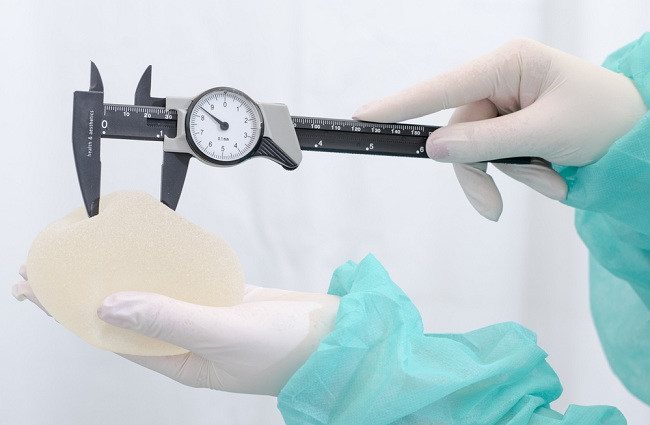Pregnancy exercise can be done to reduce various complaints during pregnancy, such as back pain, constipation, and fatigue. Not only that, exercising regularly during pregnancy can also prepare the body for childbirth.
Routine active movement can make it easier for pregnant women to adjust to changes in shape and weight gain during pregnancy. Various types of pregnancy sports can also facilitate the delivery process for pregnant women later and even restore their body shape after giving birth.

Benefits of Pregnancy Exercise for Pregnant Women
Pregnant women are recommended to do pregnancy exercise for 30 minutes every day or at least 150 minutes per week.
If pregnant women rarely exercise before, it is recommended to start exercising for 5 minutes per day, then add 5 minutes every day the following week until you reach 30 minutes per day.
Pregnancy exercise can provide many benefits for pregnant women, including:
- Relieve complaints of back pain, constipation, bloating, and swelling in the legs
- Prevent or treat gestational diabetes
- Increase stamina and body strength
- Repair mood and body posture
- Increase muscle strength and endurance
- Makes sleep better
- Facilitate the birth process
Besides being good for pregnant women, pregnancy exercise is also good for the fetus. Some research shows that babies born to mothers who exercise regularly have a lower risk of being born prematurely or born with low birth weight.
Exercise during pregnancy can also support the baby's growth and development and support his intelligence.
Types of Sports that are Safe for Pregnant Women
Most types of pregnancy exercise are generally safe to do, as long as pregnant women do it carefully and don't overdo it. The following are some types of physical exercise or exercise that are safe to do during pregnancy:
1. Take a walk
Take a leisurely walk at home or use treadmill can improve mood and strengthen the muscles of the body. Pregnant women can start by walking leisurely at least 1 km 3 times a week.
Furthermore, pregnant women can increase the time and speed little by little according to the body's ability.
2. Swimming
Swimming is an excellent pregnancy exercise to overcome various discomforts during pregnancy, such as back pain, swollen legs, and difficulty sleeping. Swimming is also good for joints and can improve blood flow in the body.
3. Yoga
This type of pregnancy exercise can strengthen the body's muscles, relieve back pain, make the body feel more relaxed, and launch the labor process later. The type of yoga that is recommended for pregnant women is prenatal yoga.
4. Indoor stationary bike
This type of pregnancy exercise is good for increasing the heart rate without having to put pressure on the joints. Static bicycles can also be adjusted to the body posture and condition of the growing belly of pregnant women, so they can be more comfortable when cycling.
5. Aerobics
Aerobics, in particular low impact aerobics, is useful for maintaining heart and lung health. This exercise can also tone the body and increase endorphins which make pregnant women feel happy and relaxed.
However, pregnant women who do aerobic exercise must get direct supervision or guidance from a certified aerobics teacher.
6. Stretch
Stretching exercises or stretching can make the muscles of the body more flexible and strong during pregnancy. Stretching movements that can be done include rotating the neck and shoulders, as well as stretching the thigh, leg, and ankle area.
7. Kegel Exercises
Kegel exercises can strengthen the muscles that support the bladder, uterus, and stomach. By strengthening these muscles during pregnancy, pregnant women will feel more relaxed when facing the labor process later.
Conditions that prevent pregnant women from exercising
Generally, pregnancy exercise is safe for pregnant women who are healthy and do not have health problems during pregnancy. However, excessive exercise or physical activity may not be recommended for pregnant women with the following medical conditions:
- Certain diseases, such as heart disease, asthma, anemia, high blood pressure, or diabetes
- Pregnant with twins
- History of giving birth prematurely
- Cervical insufficiency, namely the inability of the cervix to maintain pregnancy
- Have you ever had a procedure? cerclage, a procedure in which the cervical opening is closed with stitches to prevent or delay premature birth
- Placenta previa
- Premature rupture of membranes
Some Things to Pay Attention to When Doing Pregnancy Exercises
Before doing pregnancy exercise, there are several things that pregnant women should pay attention to so that this activity can be safer to do, including:
- Consult with your obstetrician before starting, continuing, or changing pregnancy exercise.
- Use loose clothing, a bra that supports your breasts well, and appropriate sports shoes to reduce the risk of injury during exercise.
- Eat high-calorie foods at least 1 hour before exercise, and fill your fluid intake with water before, during, and after exercise.
- Exercise by standing on a flat surface to prevent injury.
- Do the movement slowly and avoid moving too fast so as not to get dizzy.
- Avoid extreme sports or sports that have a high risk of causing injury, such as basketball, water skiing, horse riding, and diving.
- Warm up before exercising and don't overdo it, because it can cause fatigue and harm the fetus.
Pregnancy exercise is important to maintain the health of the pregnant woman's body. However, before starting to exercise, consult your doctor first so that the type and intensity of exercise can be adjusted to the health conditions of the pregnant woman.
If things happen that are not desirable during pregnancy exercise, such as vaginal bleeding, dizziness, fainting, shortness of breath, chest pain, headache, severe uterine contractions, and leaking amniotic fluid, immediately contact your doctor or midwife so that treatment can be carried out. as soon as possible.









